“Facts About Dredging Plant and Equipment” describes the specialised equipment that has been developed to perform various and specific dredging operations.
Port development, urban expansion, beach replenishment, coastal protection, flood protection, energy exploration and production, mining and environmental remediation and improvement – each of these activities involves dredging. And each of these dredging projects requires particular dredging plant and equipment based on the site-specific conditions of the project.
The basic workhorses of the industry are considered trailing suction hopper dredgers, cutter suction dredgers and a group of mechanical dredgers such as backhoe dredgers, grab or clamshell dredgers. Some of these dredgers are self-propelled and can travel long distances; some are stationary and are brought to a site. Each has unique characteristics that makes them suitable for certain jobs, depending on the type of soil conditions, the transport options, the configuration of the dredging area, including pre- and post-dredge water depths and placement requirements as regards location of disposal areas, environmental and other considerations.
In recent years, dredging vessels have become more powerful, with greater tonnage-carrying capacity and the ability to achieve greater dredging depths. These developments have been accompanied by with ever more environmentally friendly technologies and general technological advances such as in GPS, echo-sounders, position and control sensors and other highly accurate means of excavating and computer-controlled operations. Other equipment considerations include the auxiliary water-based equipment, such as barges, work boats and launches, anchor pontoons, floating line pontoons and booster pumping stations. Other equipment includes multi-cats and survey launches, floating pipeline pontoons and rubber floating pipelines, conveyor belts for transport as well some land-based equipment.
Because of the wide variety of tools – vessel sizes, diesel engine power and hopper capacity – clients, and their expert consultants, can best seek the advice of the dredging companies themselves to help find reasonable, economical solutions, within the framework of competitive bidding processes.
“Facts About Dredging Plant and Equipment” answers essential questions such as:
- How did dredging start?
- Why is Dredging Equipment so specialised?
- What are some types of dedicated Dredging Equipment?
- What are the most common types of dredgers used today?
- What are Hydraulic/Mechanical Dredgers?
- What are Hydraulic Dredgers?
- What are Mechanical Dredgers?
- What are the main characteristics of Grab Dredger?
- What are the features of the Backhoe or Hydraulic Excavator?
- What are some other types of Mechanical Dredging Equipment?
- What is a Hydrodynamic Dredger?
- What are Environmental Dredgers?
- What other types of Dredging Equipment are in use?
- How do you match the proper dredging equipment to the job?

TAGS
- Auger dredgers
- Auxiliary equipment
- Backhoe Dredgers
- Barges
- Booster stations
- Bucket-ladder dredgers
- Bucket-wheel dredgers
- Cutter Suction Dredgers
- Dredger Register
- Dredging Equipment
- Environmental equipment
- equipment
- Equipment publication
- Facts About
- Fall pipe vessels
- Grab or clamshell dredgers
- Hydraulic dredgers
- IADC publication
- Mechanical Dredgers
- Other high-tech dredging equipment
- Plant
- Trailing Suction Hopper Dredgers
- Water injection dredgers
Related Subjects
-
 Equipment
Equipment
-
 Auger dredgers
Auger dredgers
-
 Auxiliary Equipment
Auxiliary Equipment
-
 Backhoe Dredgers
Backhoe Dredgers
-
 Barges
Barges
-
 Booster Stations
Booster Stations
-
 Bucket-Ladder Dredgers
Bucket-Ladder Dredgers
-
 Bucket-Wheel Dredgers
Bucket-Wheel Dredgers
-
 Cutter Suction Dredgers
Cutter Suction Dredgers
-
 Dipper Dredgers
Dipper Dredgers
-
 Dustpan Dredgers
Dustpan Dredgers
-
 Environmental Equipment
Environmental Equipment
-
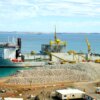 Fall Pipe Vessels
Fall Pipe Vessels
-
 Grab or Clamshell Dredgers
Grab or Clamshell Dredgers
-
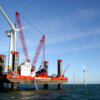 Jack-up Pontoons
Jack-up Pontoons
-
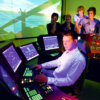 Other High-Tech Dredging Equipment
Other High-Tech Dredging Equipment
-
 Pipelines
Pipelines
-
 Ploughs, Beams and Rakes
Ploughs, Beams and Rakes
-
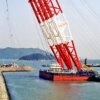 Pontoons
Pontoons
-
 Side Stone-Dumping Vessels
Side Stone-Dumping Vessels
-
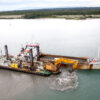 Split-Hull Hopper Dredgers
Split-Hull Hopper Dredgers
-
 Suction Dredgers
Suction Dredgers
-
 Trailing Suction Hopper Dredgers
Trailing Suction Hopper Dredgers
-
 Tugs and Tows
Tugs and Tows
-
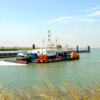 Water Injection Dredgers
Water Injection Dredgers
-
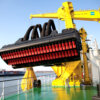 Choice of Type of Dredger
Choice of Type of Dredger

